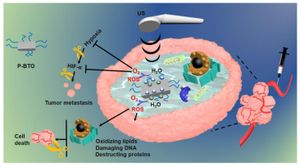The molecular circuitry of azetidine-2-carboxylic acid (AZE) biosynthesis has taken center stage as researchers explore the intricacies of this intriguing compound. Identified as an important plant metabolite, AZE sits at the confluence of natural product chemistry and biotechnology, offering promising avenues for applications ranging from drug development to synthetic biology.
Recent research has successfully highlighted the role of AZE synthases, key enzymes involved in the transformation of S-adenosylmethionine (SAM) to AZE through intramolecular cyclization. This discovery has emerged from collaborative efforts spearheaded by researchers at institutions including the University of Caen and supported by the French National Research Agency.
Previously recognized for its significance as a defense agent against herbivores and pathogens, AZE’s unique structure allows it to mimic proline, leading to altered protein conformation and functionality. This makes AZE not only pivotal for plant physiology but also relevant to synthetic applications, as its derivatives could offer enhanced pharmacological properties.
The methodological approach of this groundbreaking study involves high-resolution crystallography and comprehensive biochemical analyses, permitting detailed insights concerning the catalytic mechanisms of AZE synthases. For example, the identification of another enzyme within these pathways, known as VioH, has revealed variations and similarities within the enzyme family, underscoring the evolutionary adaptability of these metabolic processes.
Critical to this investigation is the observation of the relationships between enzyme structure and function. By elucidation of both AzeJ and VioH, researchers unveiled how the enzymatic activity hinges on the reactivity of the sulfonium group present within SAM. Such insights clarify how the precise atomic arrangement during catalysis facilitates the formation of the four-membered AZE ring, promoting the relevance of structure-based research across the entire methyltransferase family.
The promising capabilities of AZE extend even beyond fundamental research. Enhanced glycosylation applications and potential biomimetic properties declare AZE synthesis as ripe for exploration within drug synthetics.
Considering the widespread distribution of AZE synthases across various bacterial phyla, the study compels future investigations surrounding unexplored niches where these pathways may remain hidden. Indeed, the research highlights how microbial ecosystems harbor metabolic capabilities fundamental for sustainable resource management and biotechnological endeavors, lending weight to calls for greater awareness of microbial biodiversity.
Overall, these findings establish AZE synthases as not only integral to the biosynthesis of azetidine but also as exciting targets for biotechnological innovation, providing access to valuable new metabolites and chemical entities for research and pharmaceutical applications.
Moving forward, the conversation will focus on leveraging this knowledge for practical applications. The potential for combinatorial biosynthesis involving AZE raises questions about the future of drug synthesis, bioengineering, and the sustainable utilization of biological resources to solve contemporary challenges.



